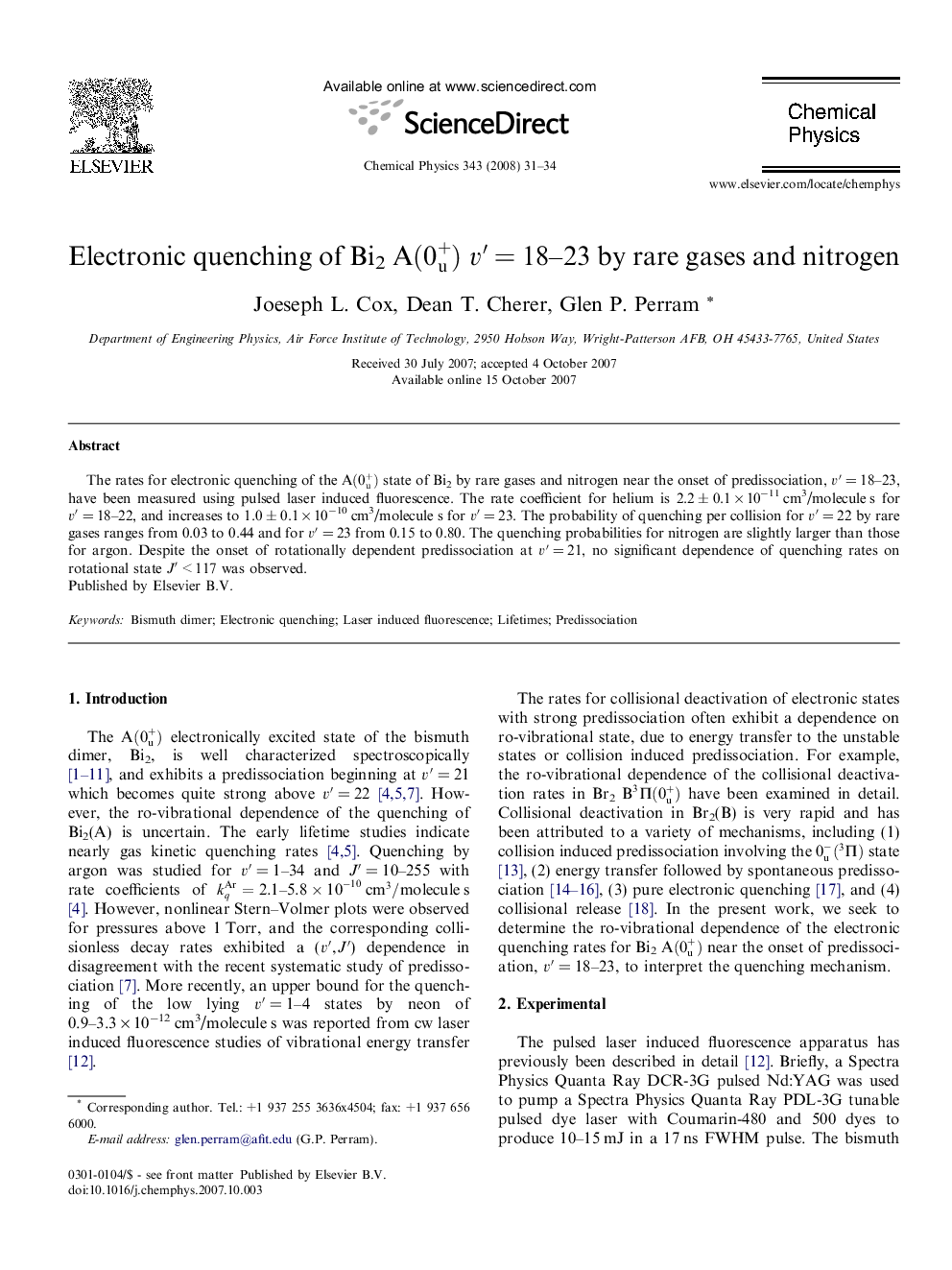| Article ID | Journal | Published Year | Pages | File Type |
|---|---|---|---|---|
| 5376030 | Chemical Physics | 2008 | 4 Pages |
Abstract
The rates for electronic quenching of the A(0u+) state of Bi2 by rare gases and nitrogen near the onset of predissociation, vâ²Â = 18-23, have been measured using pulsed laser induced fluorescence. The rate coefficient for helium is 2.2 ± 0.1 Ã 10â11 cm3/molecule s for vâ²Â = 18-22, and increases to 1.0 ± 0.1 Ã 10â10 cm3/molecule s for vâ²Â = 23. The probability of quenching per collision for vâ²Â = 22 by rare gases ranges from 0.03 to 0.44 and for vâ²Â = 23 from 0.15 to 0.80. The quenching probabilities for nitrogen are slightly larger than those for argon. Despite the onset of rotationally dependent predissociation at vâ²Â = 21, no significant dependence of quenching rates on rotational state Jâ²Â < 117 was observed.
Related Topics
Physical Sciences and Engineering
Chemistry
Physical and Theoretical Chemistry
Authors
Joeseph L. Cox, Dean T. Cherer, Glen P. Perram,
